1. Overview of Fansipan Mountain
Fansipan Mountain, often called the “Roof of Indochina”, is the highest mountain in Vietnam and the entire Indochina peninsula. Standing at 3,143 metres above sea level, it is located in the Hoang Lien Son mountain range, about 9 km southwest of Sapa town, Lao Cai province, northwestern Vietnam.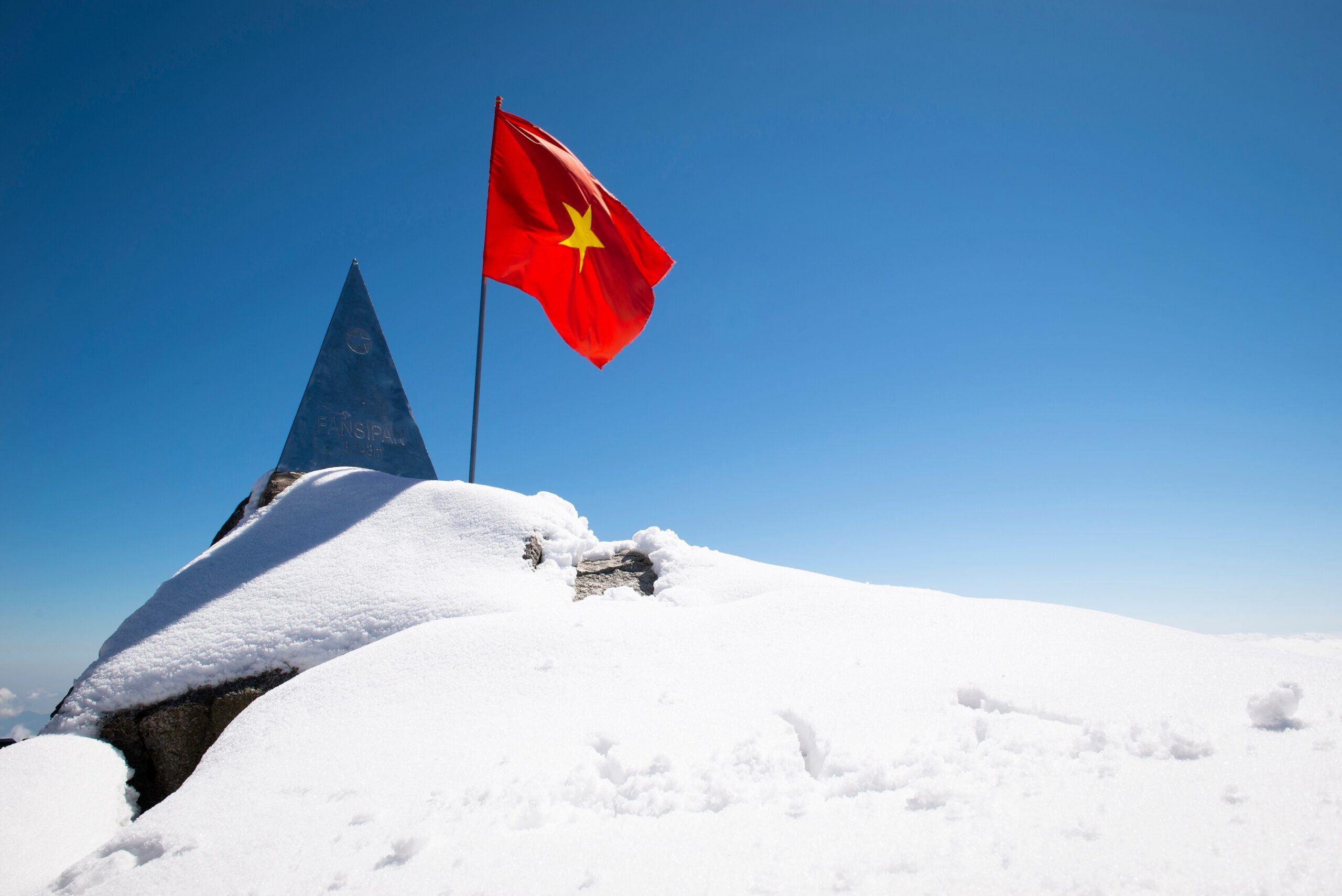 The mountain is famous not only for its majestic height and breathtaking panoramic views but also for its diverse ecosystem, making it a paradise for both nature lovers and ecotourists. With an average temperature of 4-6°C in winter and 15-20°C in summer, the mountain offers visitors a cool climate all year round.
One of the most fascinating experiences here is Fansipan snow. During the coldest winter months, temperatures can drop below freezing, covering the mountaintop in frost and white snow. This rare phenomenon transforms Fansipan into a magical winter wonderland, attracting countless tourists eager to experience snowfall in the heart of tropical Vietnam.
The mountain is famous not only for its majestic height and breathtaking panoramic views but also for its diverse ecosystem, making it a paradise for both nature lovers and ecotourists. With an average temperature of 4-6°C in winter and 15-20°C in summer, the mountain offers visitors a cool climate all year round.
One of the most fascinating experiences here is Fansipan snow. During the coldest winter months, temperatures can drop below freezing, covering the mountaintop in frost and white snow. This rare phenomenon transforms Fansipan into a magical winter wonderland, attracting countless tourists eager to experience snowfall in the heart of tropical Vietnam.
2. When Does It Snow in Fansipan
The higher altitude of Fansipan makes it the best place to witness Sapa Vietnam snow. Fansipan snow usually appears during the coldest months, mainly December and January.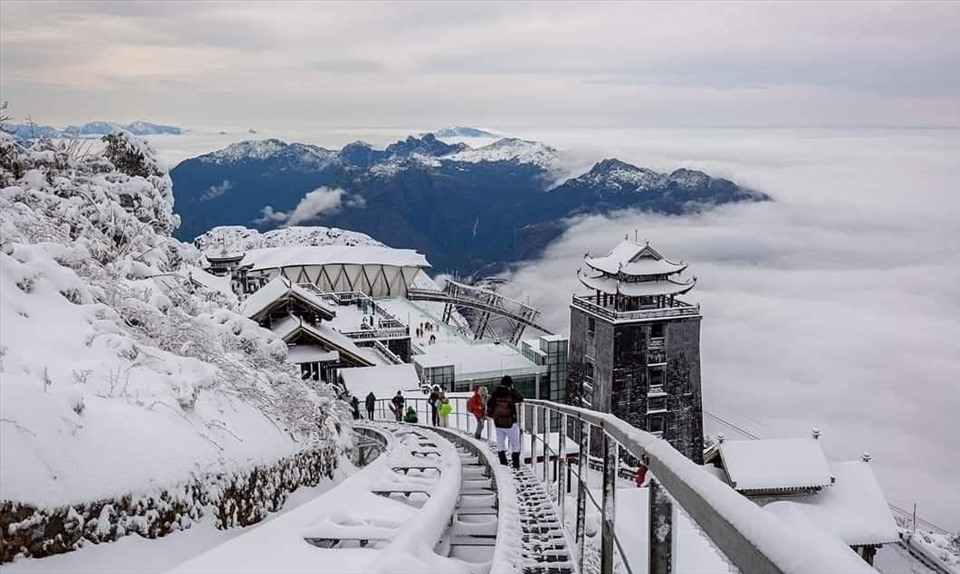 At this time, the temperature on the mountain top can drop as low as -4°C (25°F) and rarely rises above 4°C (40°F). These icy conditions create a magical winter scene, with snow covering the mountain top and the surrounding landscape.
At this time, the temperature on the mountain top can drop as low as -4°C (25°F) and rarely rises above 4°C (40°F). These icy conditions create a magical winter scene, with snow covering the mountain top and the surrounding landscape.
3. Activities in Fansipan snow
3.1. Experience Vietnam’s longest funicular ride
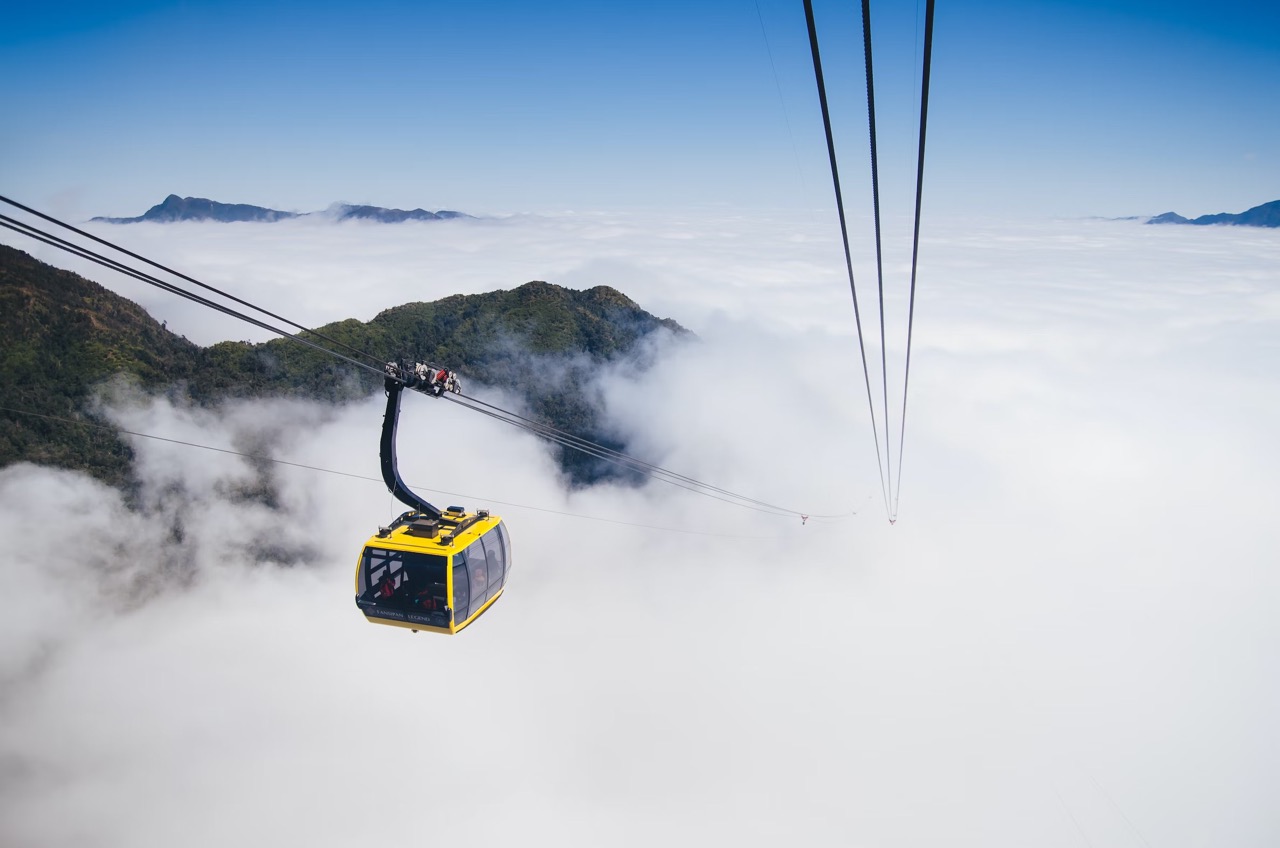 Experiencing Fansipan snow is more than just about admiring the white peaks, there are many interesting activities that make this journey unforgettable. One of the most popular experiences is taking the Fansipan cable car, the longest mountain cable car in Vietnam, stretching over 2 kilometers.
In just 4-5 minutes, visitors can admire the beautiful scenery of Fansipan Mountain, ethnic villages hidden in fog or white snow. At the top of the mountain, travelers can enjoy the peaceful beauty of the temples, capture beautiful photos of Sapa snow, and immerse themselves in the natural atmosphere of the “Roof of Indochina” on snowy days.
Experiencing Fansipan snow is more than just about admiring the white peaks, there are many interesting activities that make this journey unforgettable. One of the most popular experiences is taking the Fansipan cable car, the longest mountain cable car in Vietnam, stretching over 2 kilometers.
In just 4-5 minutes, visitors can admire the beautiful scenery of Fansipan Mountain, ethnic villages hidden in fog or white snow. At the top of the mountain, travelers can enjoy the peaceful beauty of the temples, capture beautiful photos of Sapa snow, and immerse themselves in the natural atmosphere of the “Roof of Indochina” on snowy days.
3.2. Skiing on Fansipan
Skiing is one of the most thrilling activities you can try when visiting Fansipan in the snow season. Imagine gliding down pristine slopes, feeling the crunch of snow beneath your skis, and breathing in the crisp winter air. For adventure lovers, skiing on Fansipan brings a whole new dimension.3.3. Participate in the sacred flag-raising ceremony on Fansipan peak
One of the meaningful experiences when visiting Fansipan Peak is participating in the sacred flag-raising ceremony. At the top of the mountain, travelers can admire the Vietnamese national flag flying proudly in the fresh air of the mountains and forests, surrounded by clouds.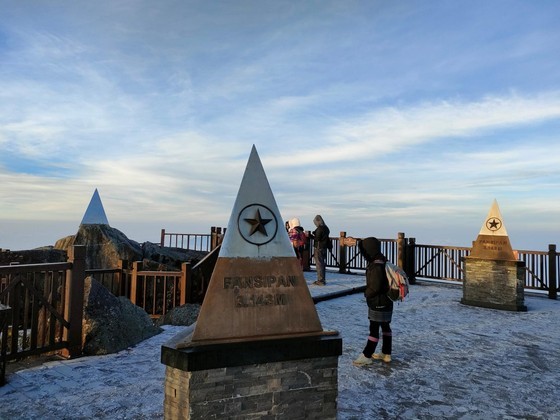 The ceremony takes place every Monday. For many Vietnamese, standing on the highest peak of the country and witnessing this ceremony is an extremely emotional moment.
During winter, when Fansipan snow appears, the scene becomes even more magical, with the red flag with a yellow star contrasting beautifully against the white snow. Combined with the rare beauty of snow in Sapa, this ritual leaves an unforgettable impression on both locals and international travelers who are looking for the magic of Sapa Vietnam snow.
The ceremony takes place every Monday. For many Vietnamese, standing on the highest peak of the country and witnessing this ceremony is an extremely emotional moment.
During winter, when Fansipan snow appears, the scene becomes even more magical, with the red flag with a yellow star contrasting beautifully against the white snow. Combined with the rare beauty of snow in Sapa, this ritual leaves an unforgettable impression on both locals and international travelers who are looking for the magic of Sapa Vietnam snow.
3.4. Explore Stunning Religious Architecture on Fansipan
Fansipan Mountain, often referred to as the “Roof of Indochina”, is not only famous for its breathtaking scenery but also for its sacred spiritual sites that attract millions of visitors each year. Hidden among the clouds are Trinh Pagoda, Bao An Zen Monastery, Bich Van Zen Monastery, Vong Linh Cao Dai and the majestic Bao Thap, each exuding a peaceful and tranquil atmosphere. The highlight is the Great Buddha Statue, the tallest bronze Buddha statue in Vietnam, standing tall as a symbol of peace and devotion. Here, visitors can pray for blessings. In winter, when snow covers the temples and roads on Fansipan peak, these places become even more charming, offering a rare combination of spirituality and natural wonders. Experiencing sacred architecture amidst the white snow in Sapa promises to bring visitors a truly unforgettable Fansipan trip, especially for those who long to admire the magical beauty of Fansipan snow.4. Travel Tips for Experiencing Fansipan Snow
Experiencing Fansipan snow is an unforgettable adventure, but the cold temperatures and unpredictable mountain conditions require careful preparation. Here are some essential travel tips to help you enjoy the beauty of snow in Sapa safely and comfortably:- Dress in layers: Wear thermal clothing, thermals, and a jacket to keep warm in the cold conditions on Fansipan Peak.
- Pack safety essentials: Always bring a first aid kit, headlamp, and an emergency blanket.
- Check the weather forecast: Snowfall on Fansipan is rare and often sudden. Always check for updates before your trip to increase your chances of seeing snow.
- Hiring a Local Guide: Trails can be tricky in winter conditions. A guide will help you navigate safely, understand weather patterns, and ensure you make the most of your Fansipan snow adventure.
- Be aware of mountain risks: Snow-covered mountains may hide hazards such as avalanches, crevasses, and slippery slopes. Stay on marked trails and avoid dangerous areas unless guided by professionals. If venturing into avalanche-prone terrain, bring safety gear such as shovels, probes, and a transceiver.
CONCLUSION
Fansipan, the “Roof of Indochina”, becomes even more charming in winter when the snow covers the Fansipan peak. Visitors can admire the beauty of the snow in Sapa and participate in exciting activities such as taking the Fansipan cable car, exploring spiritual sites, or witnessing the sacred flag-raising ceremony. Experiencing snow in Fansipan is not only about admiring the natural beauty but also about immersing yourself in it.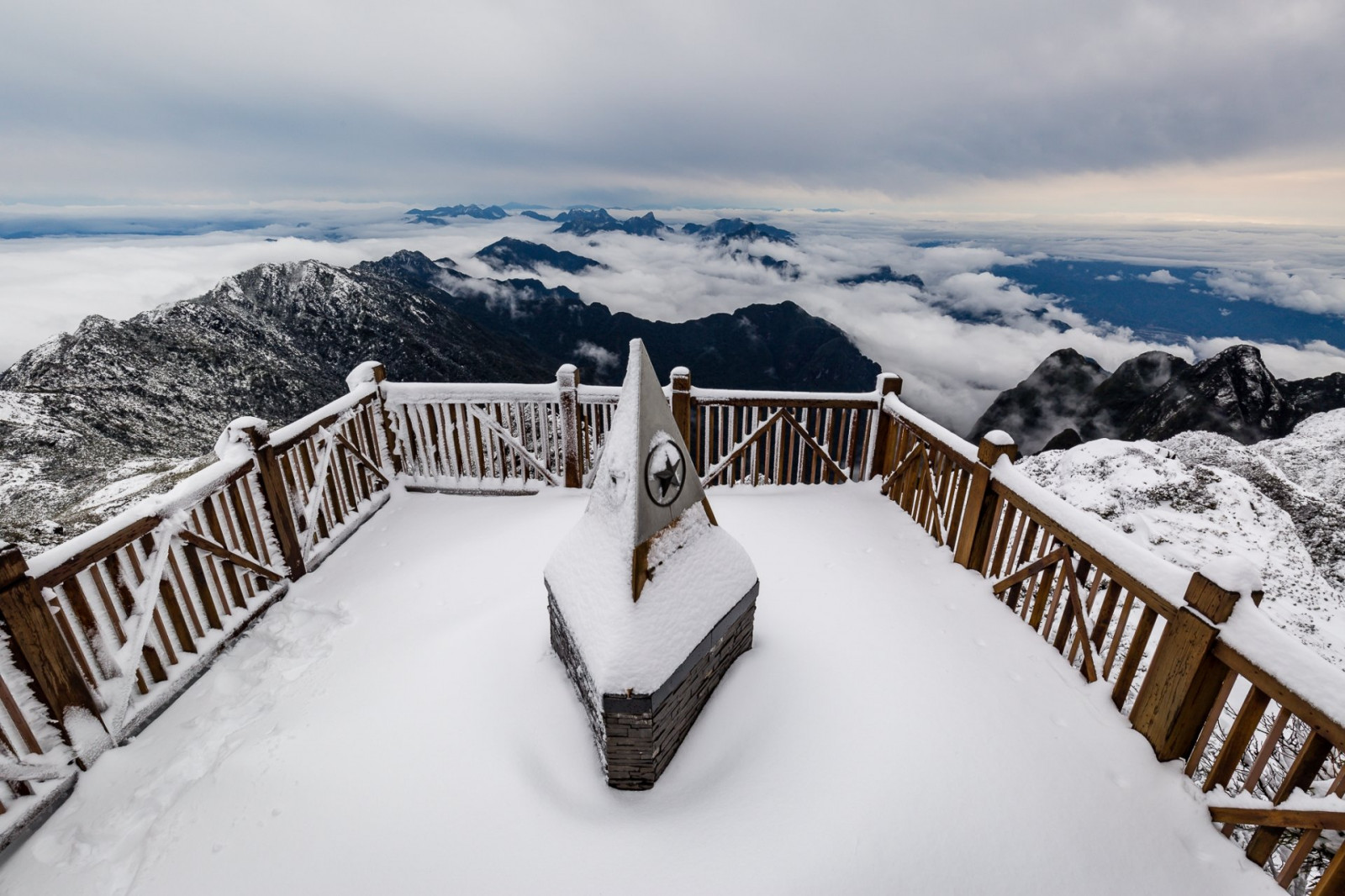 At YESD Travel, we are passionate about creating travel experiences that go beyond sightseeing. By admiring the beauty of Sapa with our tours, visitors will also experience the real life of the local community from staying with ethnic minority families to learning about their traditions.
Traveling with YESD Travel means not only witnessing the rare beauty of Fansipan in winter, but also becoming part of a meaningful story of cultural connection and sustainable tourism.
At YESD Travel, we are passionate about creating travel experiences that go beyond sightseeing. By admiring the beauty of Sapa with our tours, visitors will also experience the real life of the local community from staying with ethnic minority families to learning about their traditions.
Traveling with YESD Travel means not only witnessing the rare beauty of Fansipan in winter, but also becoming part of a meaningful story of cultural connection and sustainable tourism.